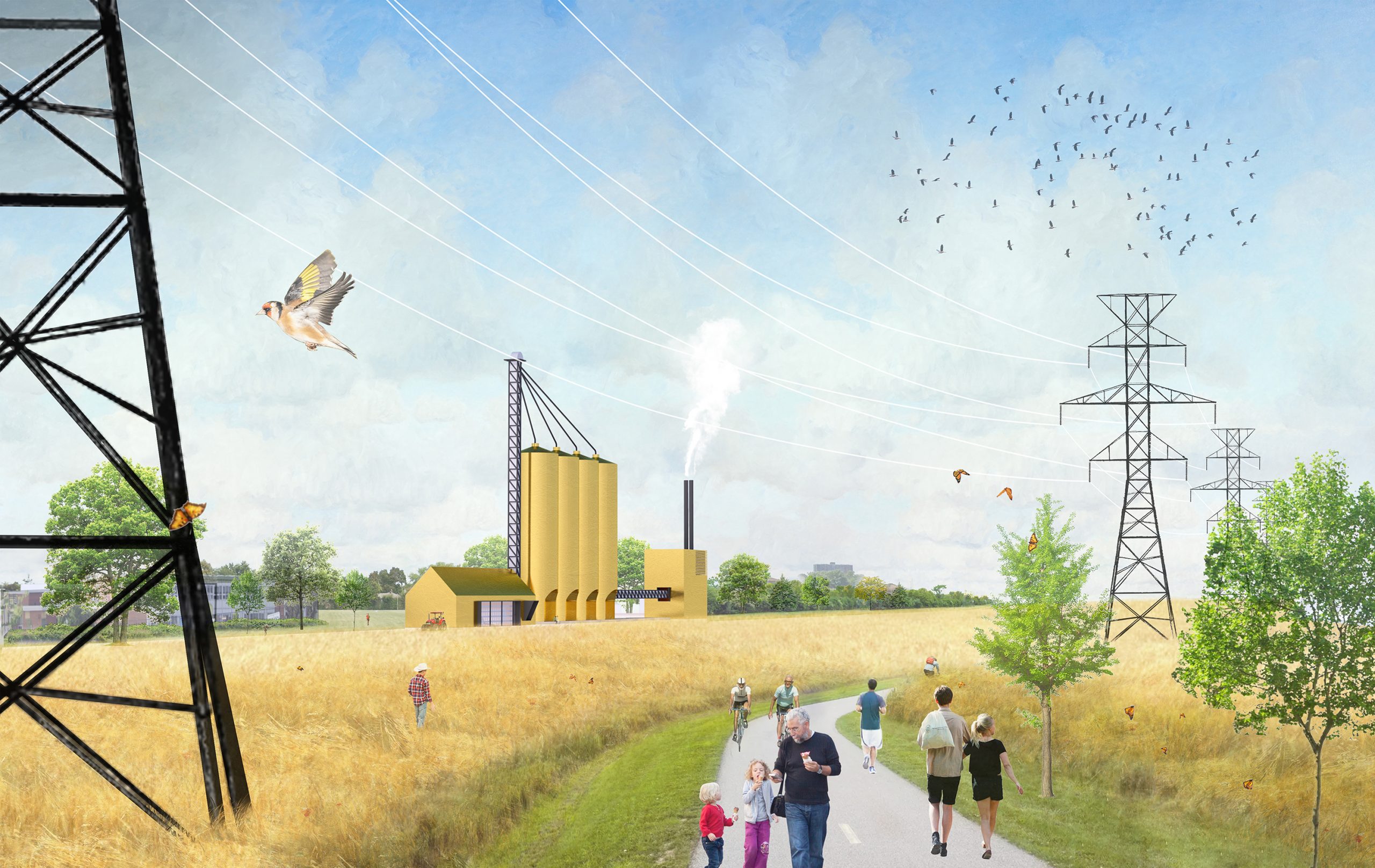Description: This image is part of a design research project that envisions new systems of local sustainable energy infrastructure that could systematically propagate throughout Toronto’s low-density suburbia. Distributed energy hubs, located at the social centres of Toronto’s neighbourhoods, would be functional symbols of collectivity that could catalyze higher density, increase the resilience of Toronto’s energy grid, create new possibilities for public program, and dramatically reduce the environmental impact of the suburbs.
The suburbs would become a constellation of neighborhoods, each with their own publicly-owned heat plant powered by renewable energy sources. A different heat plant type, one of nine options, would be selected depending on the existing geological, geographical, ecological, and industrial characteristic of each neighbourhood. The meadow corridors biomass plant shown here uses energy crops grown within the right-of-way of the hydro corridors to heat the neighbourhood. Residents engage with the energy cycle by taking part in the harvest, delivering their yard waste to the plant, or simply by strolling through the farmlands.
Why did you conduct this research? Throughout my studies in architecture I have always been interested in the systems of infrastructure that facilitate the existence of cities – urban collectivity could not exist at its current scale without waterworks, sewers, roads, electrical grids, etc. Cities are always in the process rebuilding and reinventing themselves to meet the contemporary demands of society; today, cities need to replace their carbon-intensive energy systems with new sustainable infrastructure. I wanted to contribute to the conversation on sustainable urban renewal with my thesis project by exploring a possible socially and environmentally sustainable future for one of the most inefficient realms of the city – the suburb.
Technique: This architectural collage was created by combining a rendering of a biomass plant with photos of Toronto’s suburbs and romantic landscape paintings.
Acknowledgements: I would like to extend my deepest gratitude to my thesis adviser Michael Piper for his guidance in this project, Eve Lewis and family for their support through the Paul Oberman Graduate Student Endowment Fund which greatly enriched my research, and the Daniels Faculty of Architecture for their support throughout my studies at UofT.

